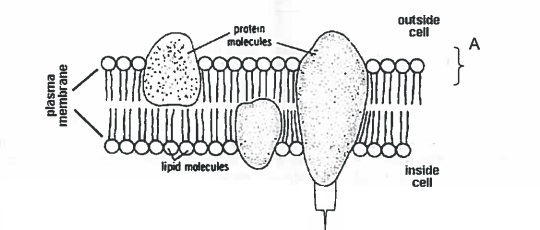Understand the basic structure and function of the cell
Task 1: Understand the basic structure and function of the cell
A Biologist is examining the epiuthelial cells of the intestine under the microscope.
a. Describe at least six organelles that he is likely to see in the cells and explain their functions.
b. As part of your practical class sessions, you will be asked to examine a cell under a high powered microscope in the laboratory.
Examine the cell under the microscope and draw what you see. Labe the parts of the cell that you can identify.
Task 2: Understand how substances are transported across a cell

Figure 1: Diagram of the fluid mosaic model of the cell membrane
a. Study figure 1 and write an account that explains how the properties of molecules A and B contribute to the semi-permeable function of the cell membrane.
Explain the differences between osmosis, diffusion, active transport and bulk transport using the following examples:
i. A cheek cell in hypotonic (weak) salt solution
ii. Glucose moving into a cell after a meal
iii. White blood cell taking in streptococcus bacteria
iv. High oxygen level in the lung
v. Salivary glands cells secreting saliva
You could support your explanation with hand drawn diagrams.
Task 3: Understand the processes of cell division
You have been invited to Society of Biology conference to deliver a poster presentation explaining the differences between meiosis and mitosis and explain when each occurs.
Emphasis the importance of each process for life and well being.
Prepare to present your poster and answer questions from the attendees at the conference (Group member and tutor). Your poster and any accompanying note will be submitted as evidence.
Task 4: Understand the nature of multi-cellular organisms
a. Explain the need for cellular specialization
b. Compare the main tissues types found in the following organs and describe their functions:
- Epithelial Cells of the gut and skin
- Heart muscle
- Bone tissues
- Nervous tissues
